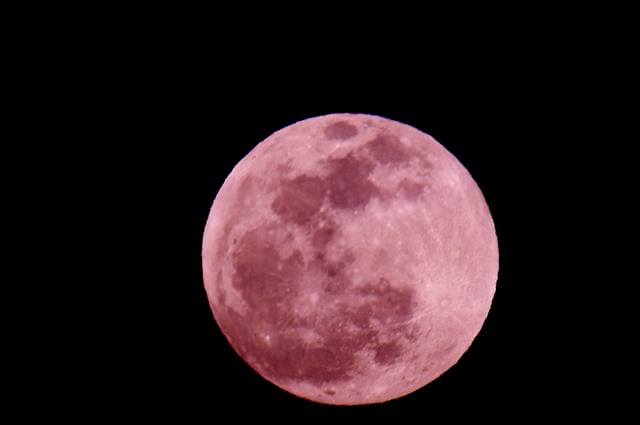“Pain will leave you, when you let go.” ~ Jeremy Aldana
~
The Buddhist New Year is celebrated on different days throughout the world, depending on the division of Buddhism, for example, Mahayana or Theravada.
In predominantly Theravadan countries, such as Thailand, Myanmar, Laos, Sri Lanka, and Cambodia, many Buddhists celebrate their New Year for three days after the first full moon in April.
Buddhist celebrations are determined by the lunar calendar rather than date, so each year the date will change.
In 1888, King Vajiravudh (Rama VI) changed the way in which years are tracked and counted to align with the Buddhist Era, which is abbreviated as BE. It is known that Buddha died in 543 BCE, so on this full moon many Buddhists will be celebrating the beginning of the year 2561.
Fundamentally, Buddhism is founded on Siddhartha Gautama’s (also known as Buddha) teachings. Buddhists teach that desire, trishna, causes suffering and the path of Buddhism is about overcoming that to reach a state of “enlightenment.”
The Buddhist New Year aligns with the full moon on the evening of April 11th. This offers us the optimum energetic phase to release any pain and suffering that we have accumulated and carried with us over this past year.
We can start this by opening ourselves up to the Four Noble Truths of Buddhism.
The first noble truth, dukkha, explains that suffering exists and is mostly due to fact that everything is impermanent. The nature of being alive is that there will be imperfection, pain, and suffering.
When we are unable to satisfy our desires and cravings, we then experience some form of suffering, and even when we do satisfy them, the satisfaction we receive is only temporary.
Even when we do feel high levels of pleasure, eventually those sensations wear off and can then lead to us feeling unfulfilled.
When we come to fully appreciate and understand that everything constantly changes and nothing remains the same, we will see that we are unable to control everything “external” to us, so there is no point in thrashing against the waves of nature by forcefully trying to swim against the current.
The second noble truth, Samudāya, is that suffering is caused by the grasping, craving attachments and expectations we have, and our desire to control our cravings.
When we attempt to avoid accepting change or loss, we often become disappointed, angry, sad, or frustrated. We may then try to reclaim what we have lost, or try to change our circumstances and when we find it impossible, it can then lead to even greater suffering.
If we obsess over what has altered in our lives, we will then remain caught up and trapped in that situation rather than existing in the present moment and flowing forward. The same applies to suffering that is caused by trying to predict and finely manage our future.
The third noble truth, Nirodha, is that our suffering will cease when we let go of expectations and our attachment to desire ceases.
This is known as nirvana and is the freedom and liberation we experience when we let go of attachments and our suffering dissipates.
This third noble truth offers a new and deeply satisfying way of existing as we gradually eliminate suffering by opening to this concept and beginning a transformational journey free from negative emotions and fear.
The fourth noble truth, Magga, is the ability to float through life in a state of balance and harmony by aligning as close to reality and the present moment as possible.
The Four Noble Truths are the basis of Buddhism, and were the first teaching of the Buddha after his enlightenment. To bring an end to our suffering, Buddhists believe, we must then follow the Eightfold Path.
To move forward and in to a state of inner peace, it is vital that we accept that our past is behind us, our future is ahead, and all we really have is the moment that is present with us now.
We cannot feel fully satisfied in the present while we are submerged in, and trying to adjust or manipulate, either the past or future.
Full moon evenings are energetic peaks, therefore, they are the perfect time to perform rituals by focusing our energy on whatever we would like to cleanse or adopt in our lives.
We can channel and direct this highly charged lunar energy so that our rituals are potently affected and have a greater chance of integrating and manifesting.
On New Year’s Eve, many Buddhists immerse statues of the Buddha in water to signify the cleansing of karma and the clearing of negative entities. During New Year ceremonies, Thai Buddhists use elements of nature that are found near the beach to eradicate the accumulation of energy from the previous year.
Salt water is a cleansing agent, so we can follow the Buddhist New Year tradition of immersing ourselves in an Epsom salt bath with burning candles placed around us.
Following our bath on the Full Moon evening, if it is possible, we can find a comfortable place outdoors to sit beneath the moon, preferably by water, such as a lake or the ocean.
This particular full moon is a powerful time to release and unburden ourselves from any pain or suffering.
We can view it as a shedding of skin as we are reborn into this Buddhist New Year and understand that by following the Four Noble Truths of Buddhism we have an opportunity to transform our mindsets through a shift in our world view.
We can change our perception at any moment, however, a full moon ritual affirms our inner transformation and significantly marks the moment of our dedication to a life of balance, peace, and harmony.
All we need is a bowl of water, a floating candle, and, if possible, some rose petals or rose essential oil, as April’s full moons are known as “Pink Full Moons,” and the color pink is associated with healing vibrations.
Fill the bowl with water, if possible from the ocean or lake, otherwise water with pink Himalayan salt or natural sea salt is a suitable option.
Place the bowl on the ground in front of you and light the floating candle in the bowl. Then drop in the rose oil, or pink petal leaves. If you have pink crystals, these can also be placed in the water to enhance the effects of the ritual.
Write on a piece of paper anything you wish to release. It can be a word, a sentence, or entire paragraphs full of detail—whatever feels necessary to purge at the time.
Read out loud what has been written and then immerse the piece of paper in the water so that the painful energy radiating from the memories can be cleansed and transformed.
The flame from the floating candle is a purifier and will neutralize any negativity emanating from the note and will also symbolize our firm intention to let go of any pain attached to it.
Burning sage at the end of this ritual will assist with cleansing any negative energy lingering and will charge the atmosphere with a positive vibration.
We can then ground and center ourselves by drinking a glass of water with a few sprinkles of pink Himalayan salt in it, while remaining aware that we are safely supported by the earth below us.
As Buddhists celebrate their New Year for three days, this ritual can be repeated if it feels necessary to do so for the three days following the full moon.
At midnight, those who will be celebrating this Buddhist New Year will wish one another “Sawatdee pi Maï’,” which translates to Happy New Year!
.
Relephant:
~
~
~
Author: Alex Myles
Image: Flickr/Padman Ramankutty
Editor: Travis May

 Share on bsky
Share on bsky







Read 19 comments and reply